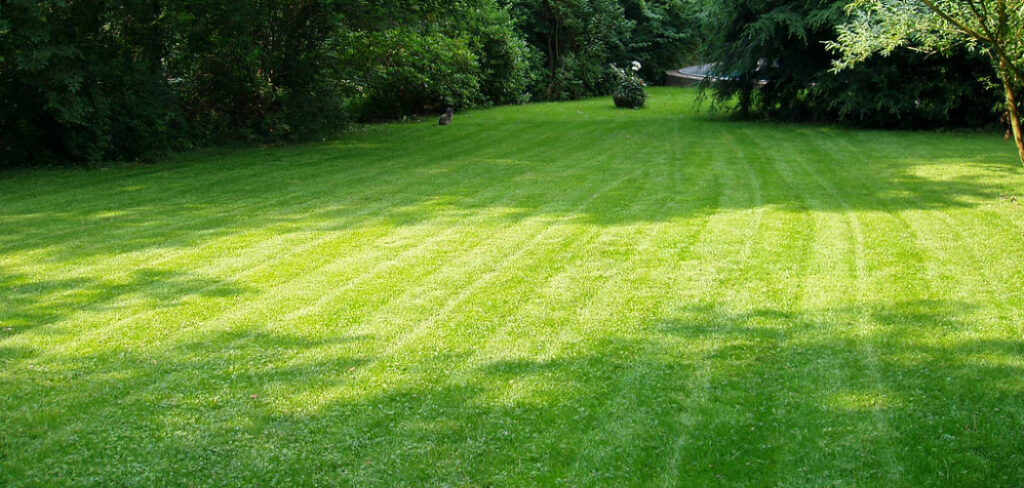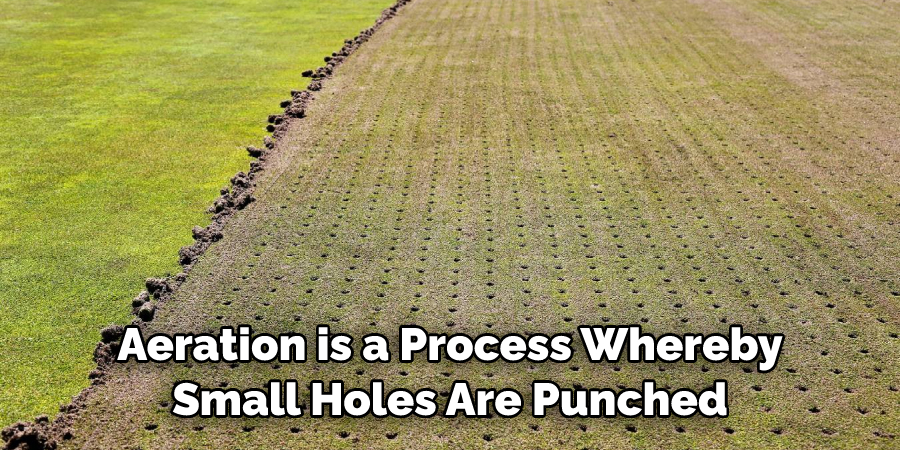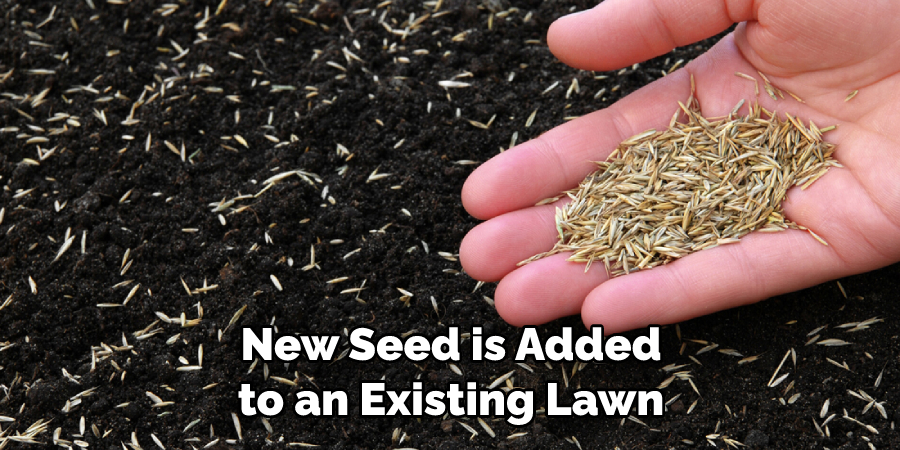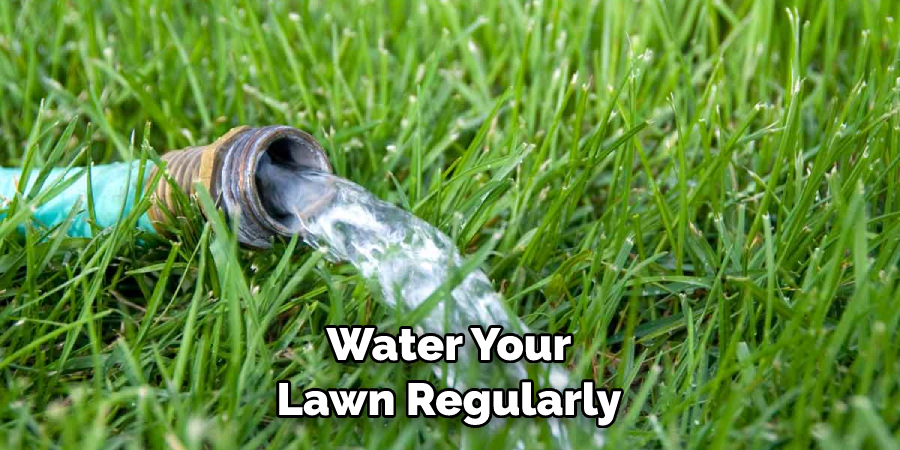If you’ve ever struggled with maintaining a lush, green lawn during the summer season, then this blog post is for you. Summer temperatures can often leave grass looking yellow, brittle, and lifeless – not exactly an ideal look for our outdoor spaces.

But keeping your grass freshly trimmed and healthy doesn’t have to be rocket science! In this post, I’m going to share some of my top tips on how to keep your grass green in the summer long. Read on for tips on mowing height, watering schedules, fertilization plans, and more – so that you can enjoy a gorgeous lawn all season long!
Should You Put Anything on Your Lawn in the Summer?
When it comes to summer lawn care, many experts recommend that you hold off on fertilizing your lawn until fall. Adding fertilizer during the hot summer months can cause your grass to grow too quickly, which can make it even more difficult for the soil to retain moisture and ultimately result in a dry, brown lawn.
In addition to avoiding fertilizer, experts also suggest decreasing your water use in the summer if possible. Most lawns only need one inch of water per week during this time of year – any more than that could potentially lead to excess growth and further diminish your yard’s ability to conserve moisture. If you want an even darker green color for your grass, consider adding natural supplements such as iron or compost tea instead of chemical fertilizers.
Finally, it’s important to remember that your lawn is a living organism and needs some rest during the summer months. Allowing your grass to go dormant can help ensure its health in the long run – just be sure not to cut it too short when mowing!

If your lawn starts to look unhealthy or brown despite your best efforts, try aerating and overseeding with a hardy strain of grass that is better able to withstand the hot summer temperatures. With these tips in mind, you should be able to keep your lawn looking green and lush all year round!
8 Effective Methods How to Keep Your Grass Green in the Summer
1. Mow High.
One of the best ways to keep your grass green is to mow high. When you mow high, you leave more of the grass blade intact, which helps the grass to photosynthesize and produce more food for the plant. The ideal height for most lawn grasses is between 2.5 and 3.5 inches.
If you mow higher than that, it can stifle growth and result in a less-than-ideal crop. However, if you mow too low, it can damage the lawn and even expose bare spots and dirt. Though shorter grass looks nice, it also leaves the lawn more susceptible to drought and disease.
2. Water Deeply and Infrequently.
It’s important to water your lawn deeply and infrequently in order to encourage deep root growth. Deep roots are essential for a healthy lawn because they help the grass to withstand drought and heat stress.
When watering your lawn, be sure to apply enough water so that it penetrates 6-8 inches into the soil. This will ensure that your grass’s roots are being nourished by the water. Avoid shallow, frequent watering as this can actually promote a shallow root system and lead to more weeds, disease, and stress.
Water your lawn once or twice a week for 1-2 hours at a time in the early morning. This will help to reduce evaporation and give the water time to reach deep into the soil. If you live in a hot climate, you may have to water more frequently. Be sure to check your local weather reports for updates on the temperature and water accordingly.
3. Aerate your Lawn.

Aeration is a process whereby small holes are punched into the soil, which allows air, water, and nutrients to penetrate deeper into the root zone. Aeration is especially important in compacted soils, which can lead to shallow root growth and a stressed lawn.
Doing this will also help reduce the heat stress that your lawn may be experiencing. It is best to aerate in late spring or early summer, when the soil is moist, so that the holes can easily be formed. After aeration, top-dress your lawn with a thin layer of compost to help retain moisture and deliver more nutrients to the grass.
4. Use Organic Fertilizers.
Organic fertilizers are a great way to provide your lawn with the nutrients it needs without causing any harm to the environment. There are many different types of organic fertilizers available, such as compost, manure, and bloodmeal.
These fertilizers are a great source of nitrogen, phosphorus, and potassium which help to promote healthy grass growth. It’s important that you follow the instructions on the fertilizer package when applying to ensure that you do not over-fertilize. Additionally, it’s best to fertilize in early spring and mid-summer to get the most benefits out of your organic fertilizer.
5. Overseed Your Lawn.
Overseeding is a process whereby new seed is added to an existing lawn in order to thicken it up or improve its appearance. Overseeding is a great way to repair thin or patchy areas of your lawn and make it look lush and green. It’s also an easy way to bring your lawn back to life after a long summer of hot, dry weather.

Be sure to follow the proper steps and apply the right type of seed to your grass. You can also add a fertilizer to help the new seed take root. With a little effort, you should see results within a few weeks.
The best time to overseed is in the late summer or early fall when temperatures are still warm enough for the seed to germinate but not so hot that it will be difficult for the young plants to survive. This is also the time of year when rainfall is more likely, so make sure to water your lawn regularly if you’re not getting enough rain.
6. Use Shade-Tolerant Grasses.
If you have an area of your lawn that receives little sunlight, consider using shade-tolerant grasses instead of traditional sun-loving varieties. Shade-tolerant grasses are designed to thrive in low-light conditions and will stay green even when other grasses might start to turn brown from lack of sunlight.
Choose grass varieties like Kentucky bluegrass, chewings fescue, or tall fescue to ensure your lawn remains green in the summer months. However, keep in mind that shade-tolerant grasses are not quite as resilient or fast-growing as their sun-loving counterparts.
7. Don’t Forget to Fertilize.
While it’s important not to over-fertilize, a light application of fertilizer once or twice during the summer months can help to give your grass an extra boost. Apply a slow-release fertilizer according to the manufacturer’s instructions, usually along the same lines as your spring fertilization.
If you’re not sure which type of fertilizer to choose, a general-purpose fertilizer is a good option. Be sure to avoid high-nitrogen fertilizers as they can cause the grass to grow too quickly and put it at risk for disease and other problems. You can also use a liquid fertilizer or a soil amendment to give the grass an extra boost of nutrients.
8. Mow Correctly.
When mowing your lawn, be sure to use the “One-Third Rule.” This rule states that you should never remove more than one-third of the grass blade length when mowing. To ensure proper lawn care and health, it’s important to mow often as needed.
This will help keep your grass from becoming too long and weak. Additionally, be sure to always use a sharp blade on your lawnmower. A dull blade will tear and shred the grass blades, resulting in a brown lawn. 9. Water Regularly.
Things to Consider When Keeping Your Grass Green in the Summer

- Make sure to water your lawn regularly, especially during long periods of hot, dry weather. Watering between 5-7 am in the morning helps avoid moisture loss due to evaporation and is more efficient than watering late at night or during the peak hours of the day.
- Mowing your grass at the height of 2-3 inches helps protect the grass from drying out and reduces stress on the plant. Be sure to mow when your grass is dry, as wet grass can be more easily damaged.
- Fertilizer should be applied twice annually, once in early spring and once in late summer. Use a low-nitrogen fertilizer to reduce the risk of burning your lawn.
- Aerating your lawn helps improve the soil by increasing oxygen levels, encouraging nutrient absorption, and loosening compacted soil.
Conclusion
Summer can be a challenging season for lawn care, but with a few adjustments and maintenance tips discussed above, you can keep your grass looking lush and green. Start by giving your lawn an early summer treatment, from fertilizing to watering and cutting appropriately.
This year don’t let the heat stop you from having a beautiful lawn – take the time to learn how to keep your grass green even during the hottest months of the year. So get out there and turn your lawn into a work of art this summer with these simple steps for How to Keep Your Grass Green in the Summer!
About
Outdoor Fixes is a distinguished figure in the world of Diy design, with a decade of expertise creating innovative and sustainable Diy solutions.
His professional focus lies in merging traditional craftsmanship with modern manufacturing techniques,
fostering designs that are both practical and environmentally conscious. As the author of diy,
outdoorfixes delves into the art and science of outdoorfixes-making, inspiring artisans and industry professionals alike.
Education RMIT University
(Melbourne, Australia) Associate Degree in Design (Outdoor Fixes) Focus on sustainable design, industry-driven projects,
and practical craftsmanship. Gained hands-on experience with traditional and digital manufacturing tools, such as CAD and CNC software.
Nottingham Trent University
(United Kingdom) Bachelor’s in outdoorfixes.com and Product Design (Honors) Specialized in product design with a focus on blending creativity with production
techniques. Participated in industry projects, working with companies like John Lewis and Vitsoe to gain real-world insights.
Publications and Impact
In diy, Outdoor Fixes his insights on indoor design processes, materials, and strategies for efficient production.
His writing bridges the gap between artisan knowledge and modern industry needs, making it a must-read for both budding designers and seasoned professionals.

